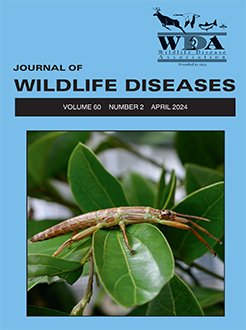Sarcoptic mange caused by Sarcoptes scabiei can have catastrophic consequences for wildlife. We inspected 122 Andean foxes (Lycalopex culpaeus), collected by active (n=66) or passive (n=56) surveillance, and 28 South American gray foxes (Lycalopex griseus; all from passive surveillance) for mange in Chile (2015–19). In Andean foxes, gross lesions of mange were diagnosed in 24% of passively and 9% of actively collected foxes, although observed prevalences might be underestimated. Seroprevalence was 37 and 18%, respectively, indicating that some individuals recovered from infection or were developing the disease. No differences were found between age and sex groups. Comparing data from passive surveillance, occurrence of gross lesions was lower in gray foxes (5%). Body condition was significantly better in Andean foxes without lesions than in diseased foxes, which had significantly lower albumin concentrations than healthy individuals. Among the 12 foxes with gross lesions, four, six and two individuals were categorized as having type I, type II, and type III lesions, respectively, based on clinical severity. Histologic severity correlated with gross lesions and included irregular epidermal hyperplasia with hyperkeratosis, which was marked in type II and III infections. Conventional PCR targeting of the cox1 gene fragment revealed four nucleotide sequence types, showing 99–100% identity among them and between 99% and 100% identity with previously published sequences of S. scabiei. A significant association between the occurrence of mange in foxes and distance to the nearest house was found. We speculate that diseased foxes tended to approach human settlements, perhaps in search of food. Visual inspection of 211 rural dogs from the study area did not reveal gross mange lesions in any animal. Sarcoptic mange is enzootic in the Andean fox in the study area and should be considered in the management of the species.
How to translate text using browser tools
5 April 2024
EPIZOOTIOLOGY AND PATHOLOGY OF SARCOPTIC MANGE IN TWO SPECIES OF FOX (LYCALOPEX SPP.) IN HUMAN-DOMINATED LANDSCAPES OF CENTRAL CHILE
Javier Millán,
Aitor Cevidanes,
Sophia Di Cataldo,
Claudia Hernández,
Diego Peñaloza-Madrid,
Nicole Sallabery-Pincheira,
Karen Terio,
Rosa Casais
ACCESS THE FULL ARTICLE

Journal of Wildlife Diseases
Vol. 60 • No. 2
April 2024
Vol. 60 • No. 2
April 2024
Chilla fox
culpeo fox
gray fox
Pseudalopex
scabies




